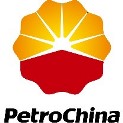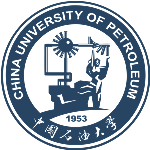Day :
- Petroleum Geology | Hydraulic Fracturing | Advanced Drilling Technologies | Petroleum Refineries | Computer Applications in Petroleum Engineering| Advanced Natural Gas Engineering
Location: Sydney

Chair
Daniel J. Soeder
South Dakota School of Mines & Technology, USA
Session Introduction
Yan Haijun
Research Institute of Petroleum Exploration and Development, China
Title: Types, characteristics, challenges and development technologies of carbonate gas reservoirs in China
Time : 14:00-14:30

Biography:
Yan Haijun, born in Henan, China, received his B.S. degree in Petroleum engineering from the Northeast Petroleum University and his M.S. degrees from Research Institute of Petroleum Exploration & Development (RIPED), Beijing, China. From 2006, he has worked in the areas of oil & gas geology, gas development. He is currently the engineer of Department of Ordos E&P,RIPED,working mainly on gas development. As an engineer, he has published over 10 papers and 1 book.
Abstract:
Carbonate gas reservoir in China mainly distributed in Sichuan, Ordos and Tarim Basin, and its reservoirs are respectively accounted for 58.57%, 23.28% and 12.99%. Carbonate gas reservoir, whose production accounts for about 30% of the total, plays an important role in the whole natural gas industry. In China, carbonate reservoir stratum has a wide distribution, ranging from Sinian to Triassic. There are 455 ×104km2 distribution area, including 28 onshore marine basins, whose area is 330 ×104km2,and 22 offshore marine basins, whose area is125×104km2. Compared with sandstone gas reservoirs, carbonate gas reservoir are facing some questions, such as greater reservoir heterogeneity, more difficult to predict, more complex fluid properties and distribution, greater differences between wells, and larger difficult to maintain stable production. Relatively speaking, the level of exploration and development of carbonate gas reservoir in China is low and gas reservoir development lacks effective development technologies. Aiming at enhancing the level of development and strengthening systematic research, the research of type classification, characteristics, challenges and development technologies is very important to the efficient development of carbonate gas reservoirs.
Researchers of different professionals have different classification results of carbonate gas reservoir types. At the same time, according to the difference of research focus, different scholars have different classification results. Based on the development practices of past decades and the current development status, in accordance with the development characteristics, carbonate gas reservoirs in China are divided into four types. These four types include fracture-cave, reef flat, weathering crust and layered dolomite carbonate gas reservoirs. Moreover, this paper pointed out the differences in the reservoir genesis, gas reservoir characteristics, and development problems of carbonate gas reservoirs, and put forward some specific development technologies.
Guo Zhi
Research Institute of Petroleum Exploration and Development, China
Title: Horizontal Well Geological Optimization in Tight Sand Gasfiled of Braided-river Facies
Time : 14:30-15:00

Biography:
Guo Zhi got his PhD degree at Petrochina Research Institute of Petroleum Exploration and Development in 2014 and has engaged in his career for about 10 years. His major is Oil & Gas development geology. He has made some progress in reservoir description, geology modelling, reserves classification and horizontal well optimization for tight sand gas, publishing more than 10 influential papers both home and aboard.
Abstract:
Sulige gasfield is a typical tight sandstone gasfield of braided-river facies in China with features of poor reservoir property and strong reservoir heterogeneity. Horizontal well technology is an effective means to improve gasfield development effect. The control of braided-river system zones’ distribution on effective sand bodies was analyzed quantitatively, and the horizontal well geological target selection standards were formed respectively in superimposed zone and transitional zone of braided river system. Considering the poor applicability of conventional modeling method, a new modeling method is put forward called “multi-stage constraints, hierarchical facies and multi-step models”. The modelling method strengthens the prior knowledge control, reduces data interpretation uncertainty, and improves the model’s reliability. Based on the geological model, with 3D visualization technology, horizontal well were designed and well trajectories were optimized.It is pointed out that in superimposed zone, channel bars are developed with relatively high ratio and larger scale, similarly, effective sand bodies are enriched with massive and thick type. Thus, the horizontal wells there may be deployed uniformly with large-scale corresponding to straight or high angle trajectory. While in transitional zone, channel filling microfacies are more developed, and sand bodies are scattered and scarce, so horizontal wells there should be deployed cautiously with dessert type, and the well trajectory is mainly ladder type. This geological optimization process of horizontal wells, combining multidisciplinary data such as logging and seismic data, is more intuitive in image display, more convenient in data transmission and update, and improves the effective reservoir drilling rate up to over 70% from previous 60%. This research can play a more reliable geo-steering function for horizontal wells while drilling and can enhance horizontal well exploitation effect. Furthermore, it may provide rapid and accurate reference for gasfield development.
Guo Jianlin
Research Institute of Petroleum Exploration and Development, China
Title: Recovery rate calculation method of large tight sandstone gas field
Time : 15:00-15:30

Biography:
Guo Jianlin, born in Hunan province, China, received his B.S. degree in Petroleum Geology from the China University of Geoscience and his M.S. and Ph.D. degrees from Research Institute of Petroleum Exploration & Development (RIPED), Beijing, China. From 1998, he has worked in the areas of oil & gas geology, reservoir modeling and engineering. He is currently senior engineer of Department of Natural Gas Development ,RIPED,working mainly on gas development.
Abstract:
Large tight sandstone gas field are characterized with big gas bearing area, poor reservoir property, strong heterogeneity and enormous scale of reserves and production. For tight sandstone gas field, recovery rate and the ultimate production are the key indicators to guide long-term stable development, make development technical strategies and evaluate the development effect. Due to its small pore & throat and complex seepage mechanism, tight sand gas is difficult to obtain accurate recovery data by conventional laboratory simulation methods. Taking Sulige large tight sandstone gas field as the research object, typical blocks are selected from the central, east, west, south zone to carry out detailed anatomy, and production wells are classified into three types according to the geological characteristics and development effect. The area ratios of various wells zones are restricted by sedimentary facies distribution. Choosing a large number of wells with long production history and in the quasi-steady-state for analysis samples, using rate transient analysis and production curvilinear integral methods, the dynamic reserves and the ultimate production are evaluated for each type of well. Integrating reservoir scale, structure and production dynamic characteristics, single well’s control scope is determined. The technical limited production, producing reserves and recovery rate are simulated considering the well pattern would be infilled with a high density. The research result shows that the technical limited recovery rate of the gas field is 71.2~ 78.5%, average 75.3%, while that of conventional gas reservoirs is 80~90%. The gas field has a technical limited production of 1.96 trillion square meters, and the current economic limited production is 1.17 trillion square meters. In the future, with the technology improvement and the development cost reduction, the production of gas field will increase by 0.79 trillion square meters.
Chen Xiangjun
Research Institute of Petroleum Exploration and Development, China
Title: Production calculation of trans-layer fractured horizontal wells
Time : 15:45-16:15
Biography:
Chen Xiangjun Graduated from China University of Petroleum, study in Research Institute of Petroleum Exploration& Development as master
Abstract:
Drilling trans-layer fractured horizontal wells is an effective method to improve the economic benefits of developing thin pay zones and low permeability reservoirs. Since the pay zones are thin and crossly distributed, the method could apparently improve the efficiency of horizontal wells and enhance oil recovery. The theory of equivalent wellbore radius is used to predict the productivity in this research to simplify this problem. The theoretic method to calculate the production of trans-layer fractured horizontal wells is given in this research. According to the result and the situation of research area, the affecting factors of the number of fractures, the fracture half-length and the fracture distance are given, which might guide the developing of trans-layer fractured horizontal wells.
Mohamed A. F. Omran
British university in Egypt, Egypt
Title: New Approach for Unconventional Reservoirs Rock Typing Characterization: Egyptian Unconventional Gas Reservoirs
Time : 16:15-16:45

Biography:
Mohamed, year four petroleum engineering & gas technology student at the British university in Egypt (BUE). Currently, he is the highest ranking petroleum engineering student at BUE. His graduation projects are research project concerning establishing new correlations for enhancing unconventional reservoirs characterization, and design project concerning development of a new software for well test analysis of unconventional gas reservoirs. Moreover, he has been accepted to get a scholarship of master of petroleum engineering at Norwegian University of Science and Technology (NTNU) next fall 2018. Also, he has participated in SPE ADIPEC University program in Abu Dhabi, 2016 as a Research Presenter, besides being a Poster Presenter at the 58th SPWLA Annual Symposium in Oklahoma City, 2017, and achieving the third place in the international students paper contest in London 2018. In addition to being speaker and assistant opening ceremony speaker at the 3rd world congress on petroleum engineering and natural gas recovery in Sydney 2018
Abstract:
According to OPEC 2013, Global economy is strongly based on Fossil Fuels which represents 90% of the primary energy produced in the world. Fossil Fuels by definition, are non-renewable sources of energy, and their amount is limited, moreover huge amounts of oil and gas world reserves has been produced. Nowadays, world energy consuming at an all-time very high, where all resources are required such as renewable energies including solar, wind, besides nuclear energy, and biofuel. There is not any source can supply and fulfill our increasing demands of energy consumption. Unconventional reservoirs can add huge amount to resource base like organic shale, tight gas and oil, coalbed methane. These reservoirs are transforming the global energy market through advances in reservoir characterization, drilling, and completion technologies have turned these reservoirs from uneconomical source rocks into sought-after resources. The greatest industry challenges are the determination of how to systematically convert these unconventional resources potential into economical and commercial reserves. In addition to improving scientific understanding of the unique characteristics of these formations is leading the way to a cleaner energy future. Although shale resource estimates will likely be changed over time, the initial estimate of technically recoverable shale gas resources in 41 contraries is 7,299 trillion cubic feet (Tcf). To put that into perspective, just 1 Tcf is enough to heat 15 million homes for a year. For all shale, including liquids, conservative estimates for oil and gas resources exceed 2 trillion barrels of oil equivalent. Almost all unconventional wells must be hydraulically fractured in multiple stages. The better reservoir extent, Hydrocarbon content, permeability and pressure are, The better play’s potential. In addition, Successful projects depend upon interconnectedness of natural fracture networks, mineralogy and thermal maturity of the shale. Creating the reservoir quality (RQ) maps across a given play helps reservoir engineers to overcome the difficulties of these resources of nano-darcy permeability, this requires a good formation evaluation plan and in terms of the nature of the formations and their fluid content of unconventional reservoirs by using element of spectroscopy (EOS) and other modern techniques in Egypt where has two substantial resources of oil shale with reserves more than 11 billion barrel of oil shale.
- Horizontal Well Geological Optimization in Tight Sand Gasfiled of Braided-river Facies
Location: Sydney

Chair
Guo Zhi
Research Institute of Petroleum Exploration and Development, China
- New frontiers in Petroleum Engineering | Reservoir Engineering & Reservoir Simulation | Environmental Impacts in Petroleum Engineering | Petroleum Substitutes | Petroleum Economics
Location: Sydney

Chair
Steven A. Tedesco
Atoka Inc., USA
Session Introduction
Jian Zhao
China University of Petroleum, China
Title: Experimental and Theoretical Evaluation of Solid Particle Erosion in An Internal Flow Passage within A Drilling Bit
Time : 11:15-11:45

Biography:
Jian Zhao is a lecturer in drilling engineering at the China University of Petroleum. His research interests include high pressure water jet penetration, particle impact drilling, solid mechanics, and liquid-solid flow. Zhao holds a B.Sc. degree in petroleum engineering, an M.ASc. degree and a Ph.D. degree in drilling engineering, all from the China University of Petroleum.
Abstract:
Recently, the particle impact drilling (PID) technology has attracted numerous interests as it can increase the rate of penetration (ROP) efficiently. Particles that are accelerated in the nozzles within the drilling bit impact the hard rock with a high velocity and frequency, which can increase the rock breaking efficiency greatly. So far, no attempts have been made to evaluate solid particle erosion and optimize the drilling bit structure together with operational parameters since the steel particles can increase the erosion of its internal flow passage resulted from the liquid-solid flow with a high velocity. In this study, a pragmatic and robust technique has been developed to experimentally and numerically evaluate solid particle erosion in an internal flow passage within a drilling bit under various conditions. Experimentally, a field-scaled three-dimensional (3D) experimental setup is developed to perform erosion experiments under various conditions, during which operating pressure, particle size, and velocity are changed, while the erosion rate of the internal flow passage within the drilling bit is continuously monitored and measured. Numerically, a two-way coupled Eulerian-Lagrangian approach is employed to solve the liquid-solid flow in the internal flow passage. The liquid is described as a continuous phase that can be solved by the Navier-Stokes equations and the particles are described as a discrete phase that can be solved by the second law of Newton. A commonly used erosion model is utilized to quantify solid particle erosion behavior in such an internal flow passage during two phase liquid-solid flow. The erosion is found to be mainly distributed on the contraction surface, while, at the inlet velocity greater than 8.0 m/s, the average erosion rate is dramatically increased. The maximum erosion rate is increased quickly as the particle concentration is smaller than 5.0 vol% and the inlet angle is increased when it is smaller than 23°. At a low erosion rate, the optimal particle diameter was found to be 2.0 mm.
Wu Zhongbao
Research Institute of Petroleum Exploration and Development, China
Title: The Research of Thansformation of Waterflooding Development Model in Super-low Permeability Oil Reservoirs
Time : 11:45-12:15

Biography:
Wu Zhongbao born in July 1970 in JiangShu province of china, senior engineer. He graduated from China University of Petroleum (Hua Dong) in 1993. He worked in Jiangsu oilfield for 10 years. He was awarded the China University of Geosciences (Beijing) Doctoral Degree in 2007, and then entered the post doctoral mobile station of Research Institute of Exploration and Development of petrochina(RIPED).He worked in Haita research center of RIPED in 2009 and worked in simulation and software center In 2017.In 2018, he was rated as the second stage expert of RIPED. He is mainly engaged in numerical simulation and development plan designing of complex reservoirs, such as low permeability reservoirs, small fault block reservoirs ,special lithology reservoirs and so on.
Abstract:
Statement of the Problem: It is very difficult to buid effective displacment system for super-low permeability oil reservoirs through general fracturing and water injection,resulting in low oil production of single well,high ratio of uneffective waterflooding,low economic performance and so on,all of these show that the traditional waterflooding development model can’t fit economical and effective development of super-low permeability oil reservoirs. Methodology & Theoretical Orientation: According to the imbibition recovery mechanism, it is figure out that imbibition oil recovery rate has increased dramatically in magnitude after network fracturing in super-low permeability oil reservoirs , therefore,imbition oil recovery has changed from the subordinate effect into the donimant one in super-low permeability oil reservoirs . Futhermore, by Summing up the practice of many oil fields, some imbibition development model are proposed ,such as waterflood huff and puff, asynchronous injection and production, exchanging between production wells and injection wells.Findings: An brand-new comprehensive development model "network fracturing + imbibition oil recovery " is created,this model is already applied in some oil fields in china and the effect of preliminary implementation is remarkable,it is estimated that the final recovery efficiency of the reservoirs can by increased by over 10%. Conclusion & Significance:The new development model holds important popularization and application foreground and will take more and more important effect on low permeability oil reservoir development.
Yang Yang
Research Institute of Petroleum Exploration and Development, China
Title: Experimental Investigation of Non-linear Flows in Artificial Multiscale Frac-vuggy Media
Time : 12:15-12:45
Biography:
Yang Yang, PHD, reservoir engineer, has studied on reservoir engineering and reservoir numerical simulation for many years
Abstract:
The size of the fractures and vugs ranges from micron scale to centimeter scale in frac-vuggy reservoir. And there is almost no flow in the rock matrix. Due to the multiscale of media, inertial coefficient is a key parameter to predict the correct production performances and behavior of frac-vuggy reservoirs. This paper introduced the process of making multiscale frac-vuggy media and will study the inertial coefficient of Forchheimer equation and its effect on oil-water two-phase flow in the media.
The experimental results of flow law showed that if flow rate is constant, the existence of non-linear flows for single water phase is determined by the fracture width and filling degree. And the effect of the vug can be ignored. However, for oil-water two phase flow, the fracture and vug both play an important role. Meanwhile, based on Rescaled Range Analysis(R/S), a mathematical model of judging non-linear flow is proposed. The Receiver Operating Characteristic (ROC) curve showed that it can accurately determine the flow law for oil-water two phase flow.
Through the analysis of the experimental data of non-linear flow, this paper proposed a modified Geertsma's empirical expression of inertial coefficient, which is a function of wetting phase saturation, fracture width, vug diameter, fracture porosity, vug porosity and total permeability. It’s more suitable for multiscale frac-vuggy media than previous literatures reports. This study showed the no linear flows and oil-water relative flow capacity in unconsolidated frac-vuggy media. They are both important in frac-vuggy reservoir numerical simulation.
Ferri Yohannes
PT Badak NGL,Indonesia
Title: Bontang lng plant operational mode strategy To accommodate lean gas entrance
Time : 12:45-13:15
Biography:
Abstract:
Bontang Liquefied Natural Gas (LNG) Plant is one of the largest LNG facilities having a capability to produce up to 22.5 Million Tons Per Annum (MTPA) LNG and 1 MTPA Liquefied Petroleum Gas (LPG). It has been operated for more than 40 years in the most excellent practice. Starting 29 May 2017, Bontang LNG Plant receives new feed gas supply which contains lean composition (97% methane content) and causes the overall feed gas composition to Bontang LNG Plant become leaner than the original design (methane content approximately 83%).
The entry of leaner feed gas to Bontang LNG plant presented operational issues both commercially and technically such as lower LNG quality (HHV), heavy hydrocarbon carry over, lower fractionation turndown ratio, and potential un-absorb gas.
This paper explains 3 key plant operational strategies that have been selected in Bontang LNG Plant to accommodate leaner feed gas supply,
- Upstream feed gas delivery strategy;
- Plant modification and operating procedure improvements;
- Dual LNG HHV production: LNG Plant can produce both lean and rich LNG products simultaneously.
Implementation of these strategies have been successfully performed and provide plant operating flexibility for new gas producers and maintain Indonesia’s position in the very competitive LNG business.
Tegwan Nyonga Hubert
Banthungnoi school, Thailand
Title: Oil and Gas Offshore Safety Case (Risk Assessment)
Time : 14:00-14:30
Biography:
Abstract:
It is one example of the offshore oil and gas construction and operation projects objectives to ensure that all its activities are managed in a manner that ensures the health and safety of all personnel and protection of the environment. In this report I try to clarify the entire colleagues actually what is the safety requirements in to oil and gas industry. I read previous study and research report, everybodynever they don’t mention what is the requirement of safety in the industry. In this report I not focuses on academy because after academy all the student target is industry that’s why in this small report I focused on industrial requirements not academic requirements. This is achieved through the management of risks resulting from:
Major accident hazards, which have the potential to affect a significant proportion of the offshore workforce and the integrity of the installation itself.
Hazards resulting from the company’s day to day operational activities.
Occupational health hazards relating to the working environment.
The following sections describe the management of the risks associated with these hazards.
Nasser Drago
UPDF, UGANDA
Title: Exploring and enhancing the recent trends and applications in the energy sector of Uganda: A legal perspective
Time : 14:30-15:00
Biography:
Nasser Drago is a Lawyer and an officer working with the Uganda Peoples Defence Forces as a prosecutor in the Court Martial Appeal Court. He has a Master of Laws in Natural Resources majoring in oil and gas
Abstract:
This paper reviews the energy sector of Uganda, which is characterized by excessive use of Biomass to provide for over 90% of the energy needs, Uganda being one of the least developed countries in the East African Region. Hydropower provides over 90% of the electricity generated in Uganda while solar, geothermal and other energy sources are underdeveloped. The legal regime and the energy policies are geared towards the use of modern, and clean energy efficient technologies. Various institutions are important in ensuring sustainability in the energy sector of Uganda. This is in form of stimulating Public Private Partnership, attracting multilateral and bilateral agenciesto provide funding, grants, and technical assistance in renewable energy projects. The Clean Development Mechanisms of the United Nations avail project developers the opportunityto obtain carbon finance. Several opportunities in Uganda’s energy sector have been highlighted. Equally, several challenges hindering the developmentof the energy sector and utilizationof renewable energy resources have been identified. Finally, conclusion and recommendations for proper management of Uganda’s energy sector have been suggested.








